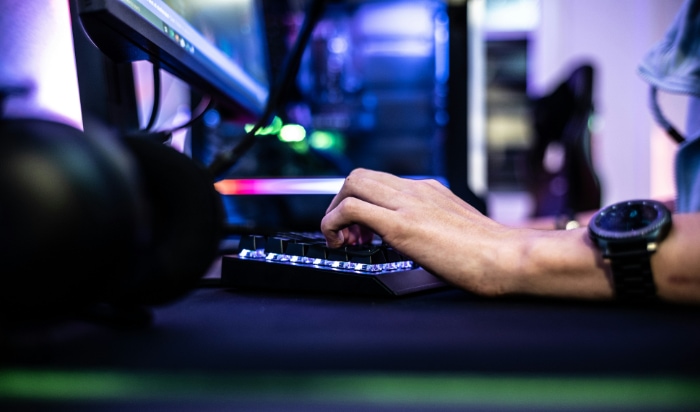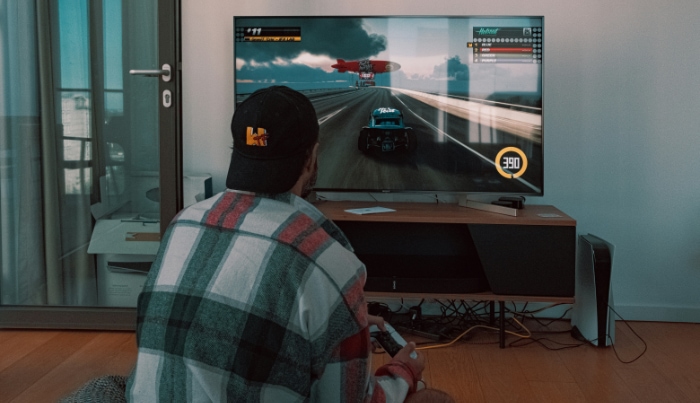Packet Loss in Gaming: Solving the Connectivity Puzzle

Picture this: You're deep in an intense online gaming session, the kind where every second counts. Suddenly, your character freezes, or worse, you're booted out of the game entirely.
Frustrating, isn't it? This annoyance, often a mystery to many gamers, has a name: packet loss. It's like sending a letter that never reaches its destination.
In the digital world of gaming, where each action hinges on rapid, seamless data transfer, packet loss can be the arch-nemesis of a smooth gaming experience.
But what exactly causes these digital hiccups? Is it just a fluke, or are there underlying issues at play? More importantly, can you fix it?
The Basics of Online Gaming Connectivity
Online gaming has transformed the way we play and interact in virtual worlds. It's a complex dance of sending and receiving data, where even a millisecond can make a difference.
At the heart of this experience lies a crucial element: data packets. These packets are the messengers of the gaming world, carrying every move, command, and interaction from your device to the game server and back.
Role of Data Packets in Online Gaming
Data packets are like tiny digital envelopes containing information. When you play an online game, your actions are converted into these packets and sent over the internet to the game server.
The server processes these packets, responds to your actions, and sends back its own packets. This rapid exchange is what allows you to interact in real-time in the gaming world.
Packet Loss: When Packets Go Missing
Sometimes, these packets don't reach their destination. They might get lost due to various reasons like network congestion, poor Wi-Fi signals, or issues with the gaming server.
This is known as packet loss. When a packet is lost, the information it carried—be it a character movement, a shot fired, or an in-game chat message—doesn't reach the server or comes back to you.
This results in disruptions like lag or glitches in the game.
Measuring Online Gaming Performance
The performance of online gaming is often measured in ‘ping' and ‘latency.' Ping is the time it takes for a packet to travel from your device to the game server and back.
Latency is the overall delay experienced in the game. High ping or latency often indicates issues with the network, and packet loss can significantly contribute to these problems.
Connectivity: Wired vs Wireless
The type of connection you use for gaming also plays a role in packet loss. Wired connections, like Ethernet, are generally more stable and less prone to packet loss compared to wireless connections.
Wi-Fi, while convenient, can be affected by factors like distance from the router, physical obstructions, and interference from other devices.
The Server's Role in Connectivity
Finally, the game server itself can be a source of packet loss. If the server is overloaded with players or experiencing its own technical difficulties, it might struggle to handle all the incoming and outgoing packets effectively.
This is why choosing a game server that's geographically closer and less crowded can often result in a smoother gaming experience.
Causes of Packet Loss in Gaming
Packet loss in gaming can turn a thrilling experience into a frustrating ordeal. Several factors contribute to this issue, ranging from network congestion to hardware malfunctions.
Network Congestion: The Digital Traffic Jam
Network congestion is akin to a traffic jam on a highway. When too many devices are sending and receiving data over the same network, it gets congested.
This overload can cause packets to get delayed or lost entirely. High traffic periods, like evenings or weekends, often see increased instances of packet loss.
Wi-Fi Interference: The Invisible Hurdles
Wi-Fi networks are prone to interference from various sources. Physical barriers like walls, floors, and large objects can obstruct the Wi-Fi signal.
Other electronic devices like microwaves, cordless phones, or even neighboring Wi-Fi networks can interfere with your connection, leading to packet loss.
Hardware Issues: The Aging Gears
Outdated or malfunctioning hardware is a common culprit behind packet loss. This includes not just your gaming device, but also routers, modems, and cables.
Over time, hardware can degrade, or it may simply not be up to the task of handling high-speed data transfer required for modern gaming.
Software Glitches: The Digital Flaws
Software issues, either in the game itself or in your device's operating system, can also lead to packet loss. Bugs, incompatibilities, or unoptimized game code can disrupt the smooth flow of packets.
Keeping your software updated is crucial to minimize these issues.
Server-Side Problems: Beyond the Gamer's Control
Sometimes, the problem lies not with your setup but with the game server. Overloaded or poorly maintained servers can struggle to handle the influx of packets, resulting in packet loss.
Gamers might experience this as a server-wide issue affecting all players connected to that server.
Symptoms of Packet Loss in Gaming

Recognizing the symptoms of packet loss is crucial for any gamer looking to troubleshoot and improve their gaming experience. Packet loss manifests in various forms during gameplay, impacting everything from game response to audio-visual elements.
Being aware of these signs can help in diagnosing and addressing the issue more effectively.
Lag and Latency Issues
Lag is a noticeable delay between your action and the game's response. It's one of the most common symptoms of packet loss.
You might press a button, but the corresponding action takes a noticeable time to occur in the game. High latency, which refers to a significant delay in data transmission, often accompanies lag and can disrupt the flow of gameplay.
Game Freezing and Stuttering
Another symptom of packet loss is the game freezing or stuttering. This occurs when packets containing crucial game data are lost or delayed.
The game might freeze for a few seconds, or you might experience stuttering motion in what should be a smoothly flowing game.
Audio and Video Distortions
Packet loss can also affect the game's audio and video quality. You might notice that the game's sound is choppy, delayed, or missing in parts.
Similarly, visual elements could appear distorted, with textures loading improperly or animations breaking up.
Disconnection from the Game
In severe cases, packet loss can lead to disconnection from the game server. This often happens when the number of lost packets is so high that maintaining a stable connection to the server becomes impossible.
Disconnections can be particularly frustrating, as they might occur during crucial moments in the game.
Diagnosing Packet Loss in Gaming
Diagnosing packet loss is a critical step towards resolving it. For gamers, understanding how to identify the issue means they can take specific actions to address it.
There are several methods and tools available that help in pinpointing if packet loss is occurring and determining its severity.
Using Built-in Game Tools
Many modern online games come equipped with built-in network performance monitors. These tools can display real-time statistics like ping, packet loss percentage, and other relevant network data.
By observing these stats during gameplay, gamers can get a clear picture of their network's performance and identify any packet loss issues.
Network Diagnostic Tools
There are various network diagnostic tools available that can help in assessing packet loss. Tools like ‘ping' and ‘tracert' (trace route) are commonly used.
They work by sending packets to a specific server and measuring if and how they return. Consistent packet loss in these tests can indicate an issue with the network.
Analyzing Router Logs
Advanced users can dive into their router's logs. Many routers keep logs of network activity, including packet loss.
These logs can provide insights into when and how often packet loss occurs, helping in diagnosing the issue more comprehensively.
Checking with the Internet Service Provider (ISP)
Sometimes the issue of packet loss is beyond the local network and lies with the Internet Service Provider. Contacting the ISP with details of packet loss incidents can help determine if the issue is on their end.
They can also run diagnostic tests from their side to check for problems in the connection to your home.
Consulting Online Gaming Communities
Online gaming communities and forums can be a valuable resource. Other gamers might have experienced similar issues and can offer advice or solutions.
Sharing experiences and solutions helps in understanding the broader context of packet loss issues in gaming.
Solutions and Preventive Measures
Addressing packet loss in gaming is not just about fixing an existing problem; it's also about taking preventive steps to ensure it doesn't happen in the first place. A combination of solutions and proactive measures can significantly enhance your gaming experience by reducing the likelihood of packet loss.
Network Optimization
Network optimization is key to minimizing packet loss. This can involve setting up Quality of Service (QoS) on your router to prioritize gaming traffic.
Ensuring that your network is not overloaded with too many devices simultaneously can also help. For gamers, using a wired Ethernet connection instead of Wi-Fi can provide a more stable and reliable connection.
Hardware Upgrades
Upgrading your network hardware can make a significant difference. This includes investing in a high-quality router that is designed for gaming, which can handle high-speed data transmission efficiently.
Regularly checking and replacing Ethernet cables and ensuring your gaming device's network card is up-to-date are also important steps.
Software Updates
Keeping all software up-to-date is crucial. This includes the game itself, your device's operating system, and the firmware on your router.
Developers often release updates that fix bugs and improve network performance, which can reduce packet loss.
Server Selection
Choosing the right game server can have a big impact. Servers that are geographically closer tend to have lower ping times and less packet loss.
Many games offer the option to select a server, so choosing one with a lower ping can improve your gaming experience.
Conclusion
Packet loss in gaming is a challenge that, once understood, can be effectively managed. This journey through the complexities of online gaming connectivity, the causes and symptoms of packet loss, and the various diagnostic and solution strategies highlights a path towards a smoother gaming experience.
We’ve seen how factors like network congestion, hardware issues, and server-side problems contribute to packet loss and the resulting symptoms such as lag, game freezing, and audio-video distortions. Armed with this knowledge, gamers can now diagnose packet loss using tools and techniques like network diagnostics and router logs, and take proactive steps to mitigate it.
From optimizing networks and upgrading hardware to selecting the right game servers, the solutions are varied and accessible.


